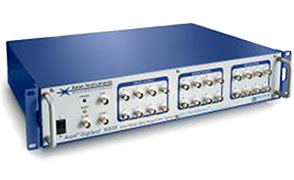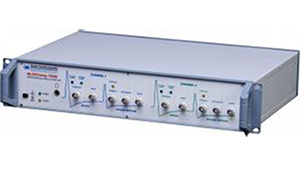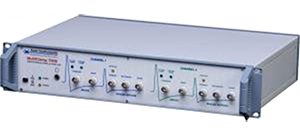
University of Michigan use our Axon instruments to investigate NMDAR receptor blockers
COMPANY/UNIVERSITY
University of Michigan
TEAM MEMBERS
Kevin S. Jones
Nichelle Jackson
PRODUCTS USED
Axon Instruments Patch-Clamp Amplifiers
MultiClamp 700B Microelectrode Amplifier
Axon Digidata 1550B Low-Noise Data Acquisition System plus HumSilencer
pCLAMP 11 Software Suite
The Challenge
NMDAR ion channels are found in neurons and are frequent targets of research efforts. In addition to potentially playing a key role in learning and memory, it is also a target for research for therapeutic solutions against Alzheimer’s disease, Parkinson’s disease, schizophrenia, and depression. Dr. Kevin S. Jones and doctoral student, Nichelle Jackson, from the University of Michigan, are exploring the effects of two NMDAR receptor blockers, memantine and MK-801. Despite both drugs binding to the same region of the ion channel, these two antagonists have exceptionally different effects. Whilst memantine is used to treat the symptoms of Alzheimer’s disease, MK-801 is known to induce psychotic effects. Nichelle hypothesizes that these different effects arise from differences in how the drugs interact with the ion channel.
The goal of Nichelle’s research is to identify structural elements within the channel pore that mediate these differences. She uses site-directed mutagenesis to introduce point mutations into the NDMA channels to determine structural elements within the channel pore that are responsible for the differing effects of memantine and MK-801.
The group uses human embryonic kidney cells as a heterologous expression system to measure how the mutations impact changes in the amplitude and waveform of NMDAR current after the drugs block the channel pore. In addition to requiring extremely sensitive equipment to detect small changes in electrical current, the group also needed a way to deliver the antagonists with high temporal precision.

The Solution
The team is using a MultiClamp™ 700B microelectrode amplifier alongside a Digidata 1550 Digitizer with HumSilencer® technology and pCLAMP electrophysiology software to acquire data. They use the digital outputs on the digitizer to control a rapid fluid delivery instrument. This approach provides precise temporal control of drug delivery and allows them to control the entire experiment using pCLAMP software.

pCLAMP 11 Software Suite

Axon Digidata 1550B Low-Noise Data Acquisition System plus HumSilencer

MultiClamp 700B Microelectrode Amplifier

Axon Instruments Patch-Clamp Amplifiers
Products Used
Low Noise Data Acquisition System enables you to record multiple cells at once for cellular network studies without 50/60 Hz line-frequency noise. The MultiClamp™ 700B Microelectrode Amplifier is a versatile, computer-controlled microelectrode amplifier designed for patch voltage-clamp or high-speed current clamp recording within the same headstage. With many automated functions and effective signal conditioning ideal for many applications including high-speed current clamp, patch clamp, voltammetry/amperometry, ion-selective measurements, and bilayer recordings.
The Results
Technical aspects of incorporating the fluid delivery mechanism into the electrophysiology setup was challenging, and the team reached out to Dr Jeffrey Tang at Molecular Devices for advice and support. The research is in early stages but the team has already identified amino acid residues in the NMDAR pore that impact pharmacological properties of the antagonists.